A dry cough is a reflex that allows the clearing of the respiratory tract. However, this type of cough has no mucous secretion or sputum. In a dry cough, the patient senses irritation in the throat.
A dry cough often occurs with upper respiratory tract viral infections, especially at the start of the condition. Viruses do not cause the formation of purulent secretions in the respiratory tract. However, as a result of their multiplication in the bronchial epithelium, it is damaged. The epithelium then overreacts to various stimuli, and even faster airflow during conversation, violent laughter, or breathing during physical exercise may irritate it, which causes a dry, tiring cough. The disease subsides as the respiratory epithelium regenerates after the infection subsides.
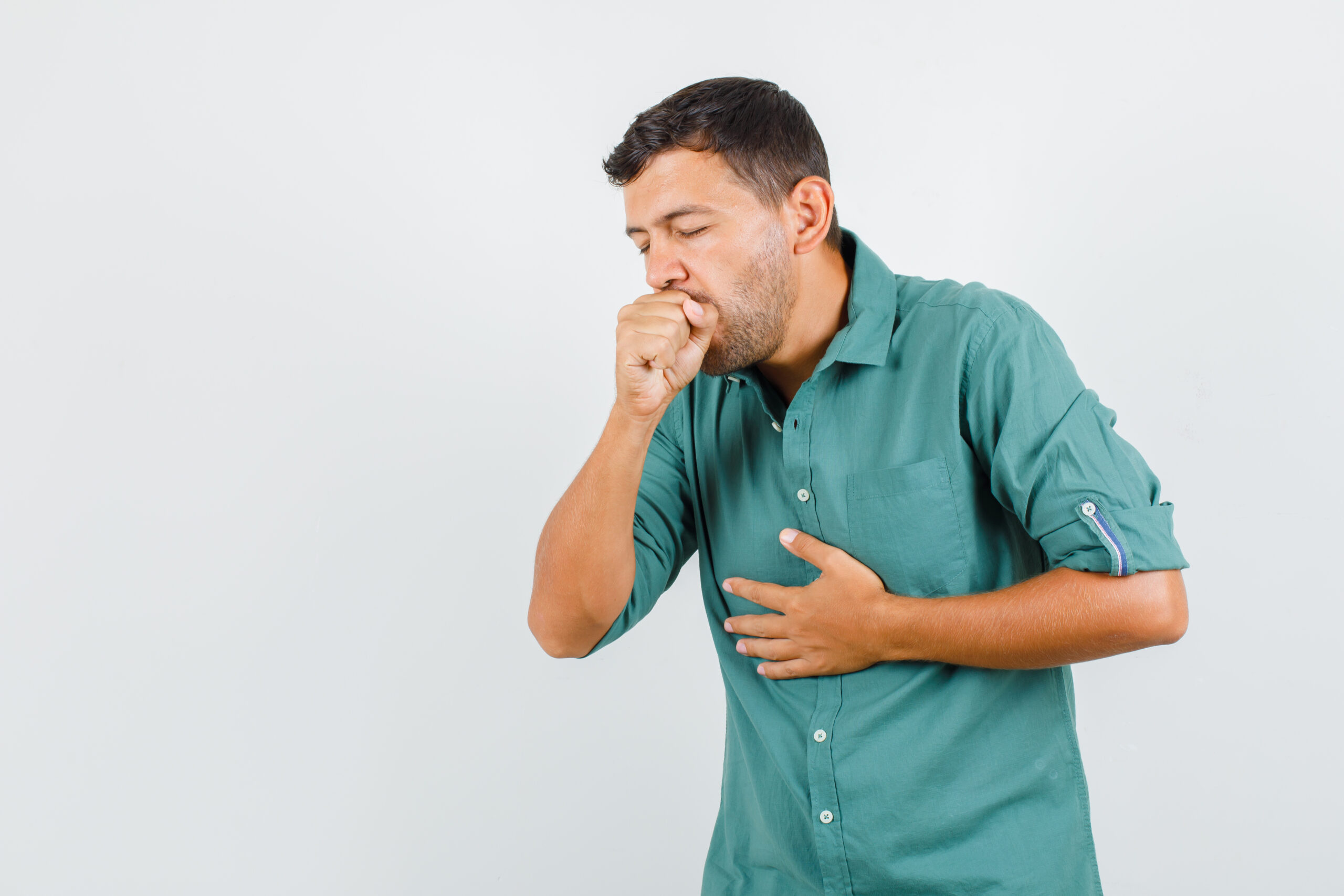
Wet cough, also called productive cough![]() , is characterized by the presence of secretions that we expectorate. Typically, the mucus is sticky, thick, and white or yellowish. Then, such purulent discharge during a wet cough indicates the presence of an infection. A slightly gurgling sound accompanies expectation.
, is characterized by the presence of secretions that we expectorate. Typically, the mucus is sticky, thick, and white or yellowish. Then, such purulent discharge during a wet cough indicates the presence of an infection. A slightly gurgling sound accompanies expectation.
A wet cough is our ally in the fight against infection because it allows us to remove residual secretions along with live and dead microorganisms that cause the disease.
Specialists list many factors that cause dry cough, including:
The production of secretions in the respiratory tract does not accompany a dry cough![]() . Although the airway is not obstructed, many individuals detect a tickling sensation in the throat. As the condition advances, a dry cough can shift into a wet cough with excessive mucus.
. Although the airway is not obstructed, many individuals detect a tickling sensation in the throat. As the condition advances, a dry cough can shift into a wet cough with excessive mucus.
With a dry cough, patients complain of symptoms like:
Patients struggling with a persistent, dry cough should consult a doctor![]() . The specialist will then conduct a medical interview and implement appropriate treatment focused on the cause of the ailment.
. The specialist will then conduct a medical interview and implement appropriate treatment focused on the cause of the ailment.
The viral infection, the most common cause of dry cough, usually lasts about three days and then goes away. You may also notice a runny nose or high temperature. We can overcome the current dry cough independently, but we need to monitor it to see if anything alarming is happening.
You should see your family doctor if, in addition to a dry cough, you experience vomiting or choking, you're coughing up blood, the infection is prolonged, and the symptoms do not improve despite home treatment. An alarming situation also occurs when a dry cough does not turn into a wet cough despite taking expectorants, and a high fever above 39 degrees Celsius persists for a long time.
The basis for diagnosing chronic cough is a carefully collected interview![]() . During the conversation, the specialist may ask about recent infections, chronic diseases, medications taken, exposure to irritating factors, and accompanying symptoms.
. During the conversation, the specialist may ask about recent infections, chronic diseases, medications taken, exposure to irritating factors, and accompanying symptoms.
The next step in the diagnosis of chronic cough is a physical examination![]() . The specialist will listen to the chest, it is also necessary to assess the condition of the nasopharynx, and lymph nodes in the neck and chest area and examine the ears using an otoscope. Then, which tests the doctor will refer the patient to will depend on the type of coexisting symptoms.
. The specialist will listen to the chest, it is also necessary to assess the condition of the nasopharynx, and lymph nodes in the neck and chest area and examine the ears using an otoscope. Then, which tests the doctor will refer the patient to will depend on the type of coexisting symptoms.

Diagnostics can be extended with imaging tests![]() , e.g., chest X-ray. If changes are present, they may indicate the development of certain infections, cancers, and chronic lung diseases. The doctor may order additional tests if the X-ray does not show any abnormalities. Depending on the patient's clinical condition and interview data, spirometry, bronchoscopy, or more detailed chest imaging tests (including computed tomography) may be helpful.
, e.g., chest X-ray. If changes are present, they may indicate the development of certain infections, cancers, and chronic lung diseases. The doctor may order additional tests if the X-ray does not show any abnormalities. Depending on the patient's clinical condition and interview data, spirometry, bronchoscopy, or more detailed chest imaging tests (including computed tomography) may be helpful.
Suppose coughing attacks and a scratchy throat last many weeks and are not accompanied by other cold symptoms. In that case, the patient may be referred for a complete blood count or gastrointestinal examination to check for reflux. Sometimes, your physician can direct you to a cardiologist, pulmonologist, or allergist.
The dry cough that starts with a common cold or flu turns into a wet cough as the infection progresses. Therefore, before this happens, it is worth soothing a dry cough.
For this purpose, you can use antitussive drugs![]() that inhibit the cough reflex. Dextromethorphan is commonly used in over-the-counter medications. Codeine, on the other hand, can only be prescribed by a doctor in more persistent cough cases. It is important to use medications as directed by your doctor because they may cause side effects.
that inhibit the cough reflex. Dextromethorphan is commonly used in over-the-counter medications. Codeine, on the other hand, can only be prescribed by a doctor in more persistent cough cases. It is important to use medications as directed by your doctor because they may cause side effects.
Dry cough attacks also become less bothersome with antihistamines![]() . However, they can be used only after finding the cause of dry cough (mainly in the case of allergies or cough resulting from contact with irritating substances).
. However, they can be used only after finding the cause of dry cough (mainly in the case of allergies or cough resulting from contact with irritating substances).
It is also worth remembering that cough is a reflex![]() that aims to help clear the airways. It means that our body uses it as a natural defense mechanism. However, there are situations in which cough suppression is recommended. For example, this occurs after neurosurgery and ophthalmology. Then, the general agitation and increased pressure in the chest accompanying coughing may increase pressure inside the skull and eyeball.
that aims to help clear the airways. It means that our body uses it as a natural defense mechanism. However, there are situations in which cough suppression is recommended. For example, this occurs after neurosurgery and ophthalmology. Then, the general agitation and increased pressure in the chest accompanying coughing may increase pressure inside the skull and eyeball.
A dry cough also requires medication to loosen the mucus![]() in the lungs. Thanks to this, mucus and microorganisms remaining in the body can be removed.
in the lungs. Thanks to this, mucus and microorganisms remaining in the body can be removed.
If a dry cough is caused by post-infectious irritation of the epithelium, its regeneration should be stimulated. The process may take several weeks. During this time, it is worth ensuring good hydration of the mucous membranes and supporting their functions.
In children![]() , a dry, tiring cough is often a remnant of a past viral infection. Even though the body has already fought off the disease, the condition may persist for many days and sometimes even several weeks. You should see a doctor to rule out other causes if the cough is chronic.
, a dry, tiring cough is often a remnant of a past viral infection. Even though the body has already fought off the disease, the condition may persist for many days and sometimes even several weeks. You should see a doctor to rule out other causes if the cough is chronic.
Pharmacies offer many antitussive syrups for the youngest patients. However, some home remedies will also work for children and can be effective at night and during the day.
The previously mentioned inhalations are a frequently chosen technique for treating a dry cough in children. Inhalations![]() using a nebulizer and saline are safe even for infants. In smaller children, it is advisable to use a mask. However, teaching your child to use the mouthpiece as soon as possible is recommended because this method is more effective. Inhalation should last approximately 10-15 minutes. You also cannot forget about drinking enough fluids.
using a nebulizer and saline are safe even for infants. In smaller children, it is advisable to use a mask. However, teaching your child to use the mouthpiece as soon as possible is recommended because this method is more effective. Inhalation should last approximately 10-15 minutes. You also cannot forget about drinking enough fluids.
An effective way to treat a dry cough in a child is infusions of plants rich in mucus. For example, we recommend tea made from mullein flowers![]() . Linseed
. Linseed![]() will also be helpful. Onion syrup
will also be helpful. Onion syrup![]() can also be used for children over two years of age. Sweetening the infusions with honey is a good idea, making your child more willing to drink them. However, the product should not be used in children under two years of age due to the possibility of infant botulism (botulism infection).
can also be used for children over two years of age. Sweetening the infusions with honey is a good idea, making your child more willing to drink them. However, the product should not be used in children under two years of age due to the possibility of infant botulism (botulism infection).
Pregnancy![]() and breastfeeding
and breastfeeding![]() are unique conditions during which you should take special care of your health because treatment options are limited. Many drugs hurt the fetus. That is why specialists do not recommend their use for future mothers or breastfeeding women. For this reason, any ailments should be treated immediately and their development prevented if possible.
are unique conditions during which you should take special care of your health because treatment options are limited. Many drugs hurt the fetus. That is why specialists do not recommend their use for future mothers or breastfeeding women. For this reason, any ailments should be treated immediately and their development prevented if possible.
When using pharmaceutical antitussives during pregnancy, it is best to choose natural ones. However, even in such a situation, it is worth seeking the attending physician's opinion. Limiting yourself to home remedies may be safest, but they are not always sufficient.
Coughing may worsen in dry and warm air. We can also fight persistent dry cough with home remedies. It is where homemade syrups![]() can come in handy. The syrup should contain herbal infusions, e.g., ginger or marshmallow root, for a dry cough. They are an effective way to stop coughing. A drink with freshly squeezed raspberry juice with lemon will be helpful. Linden is also recommended, as it supports the immune system (like ginger).
can come in handy. The syrup should contain herbal infusions, e.g., ginger or marshmallow root, for a dry cough. They are an effective way to stop coughing. A drink with freshly squeezed raspberry juice with lemon will be helpful. Linden is also recommended, as it supports the immune system (like ginger).
An excellent way to treat a dry cough is to use a spoonful of honey because it can also relieve persistent dry cough, attacks which sometimes lead to chest pain. Add a spoonful of honey to water with lemon in the evening and drink the prepared drink in the morning. Do not use hot water, as it may damage the valuable compounds contained in honey and lemon.
Flaxseeds are an excellent way to relieve a dry cough. It is helpful when a cough appears, accompanied by pain and scratching in the throat. Linseed infusion will relieve a persistent cough. To use flaxseed, pour a glass of water over a tablespoon of linseed and cook for about 10 minutes. Just add a spoonful of honey to the mixture. We drink the water twice a day.
Some people decide to drink olive oil with squeezed lemon juice. This combination provides diuretic, anti-inflammatory, and relaxing properties. To prepare the mixture, mix olive oil with freshly squeezed lemon juice. Then shake the whole thing thoroughly and drink one teaspoon thrice daily. However, you can always make normal black tea and squeeze some lemon juice into that.

Ginger has a very beneficial effect on the mucous membranes, which is why it soothes dry coughs so effectively. To do this, prepare a ginger decoction. Cut the ginger into thin slices and pour liters of water over it. Cook everything over low heat for about 20 minutes, strain, and sweeten with honey or raspberry syrup. Drink a glass of the infusion prepared in this way twice a day, in the morning and the evening.
Dried linden is one of the longest and best-known methods of combating persistent dry cough. Specialists recommend it for dry cough in children. You can buy linden tea in herbal stores; its preparation is uncomplicated. Most often, dried linden flowers are used to prepare the infusion. We need a teaspoon of dried flowers to prepare the tea, which should be poured with boiling water and covered for about 5-10 minutes. Then strain the infusion and drink slowly during colds, up to three times daily. This tea is also suitable for drinking before going to bed.
Among the home remedies for cough, do not forget about garlic![]() . Just crush the clove, and the garlic begins to secrete a substance with antibiotic properties. Garlic is an excellent home remedy for dry cough, but do not overdo it as it may burden the liver too much. To support the throat and respiratory tract, eat one clove of garlic a day.
. Just crush the clove, and the garlic begins to secrete a substance with antibiotic properties. Garlic is an excellent home remedy for dry cough, but do not overdo it as it may burden the liver too much. To support the throat and respiratory tract, eat one clove of garlic a day.
Milk with garlic and butter will also help with dry cough. We need 250 ml of milk, one tablespoon of honey, a clove of garlic, and a tablespoon of butter to prepare the drink. The milk must first be boiled and cooled. Then mix them with honey, and finally add butter and a crushed garlic clove. Drink milk with garlic twice daily if a dry cough is very bothersome.
Dry air in the home irritates the throat and often causes a dry cough. Unfortunately, this cause is often underestimated due to the lack of monitoring of indoor air humidity. It is easier to combine constant coughing with imperfect weather outside than with being indoors. In the autumn and winter, when the heating season is in full swing, it is worth monitoring the air humidity and, if necessary, using humidifiers.
In addition to making homemade cough syrups yourself, you can also buy ready-made herbal preparations![]() from the pharmacy, which are a natural alternative to synthetic preparations.
from the pharmacy, which are a natural alternative to synthetic preparations.
The task of herbal preparations for dry cough is to stop coughing attacks, which is ensured primarily by the content of mucous substances. They have a coating and protective effect on the mucous membrane, which prevents it from irritating and thus preventing coughing. This effect is ensured by marshmallow root, coltsfoot leaf, mullein flower, and mallow leaf. The preparations are available in the form of syrups or throat sprays.
Moreover, as we mentioned before, inhalation can be easily performed at home, using only a container with hot water, a towel, and the preparations you want to use for inhalation. This is a simple solution for temporarily relieving cold symptoms, such as runny nose and cough. However, if respiratory infections often return, a more convenient and effective method is to use a nebulizer.
Nebulization enables the delivery of medicinal substances to a specific section of the respiratory tract. Additionally, in the case of modern inhalers, the patient's inhalation-exhalation coordination is not required, which allows the use of such equipment in infants, the elderly, and people with breathing coordination problems.
Inhalation during troublesome rhinitis can bring significant relief and speed up recovery. This treatment involves inhaling water vapor containing herbal essence. You can easily prepare it at home. To carry out a treatment to soothe a runny nose, the specialists recommend using a substance that has a thinning effect and facilitates the removal of secretions accumulated in the nose. The best oils for inhalation![]() are eucalyptus, lavender, rosemary, or peppermint, and herbal mixtures containing chamomile, linden blossom, anise, thyme, or yarrow.
are eucalyptus, lavender, rosemary, or peppermint, and herbal mixtures containing chamomile, linden blossom, anise, thyme, or yarrow.
The inhalation is prepared by adding appropriately selected herbs or a few drops of essential oil to boiled-hot water. The steaming infusion is inhaled through the nose and exhaled through the mouth while keeping the head over the bowl/container and securing it with a towel to limit the released steam's loss and maintain the solution's appropriate temperature for a longer time. Inhalation should last approximately 10-15 minutes. It can be performed several times a day for 5-7 days. During home inhalation, you can take short breaks of a few seconds.
Table of Contents
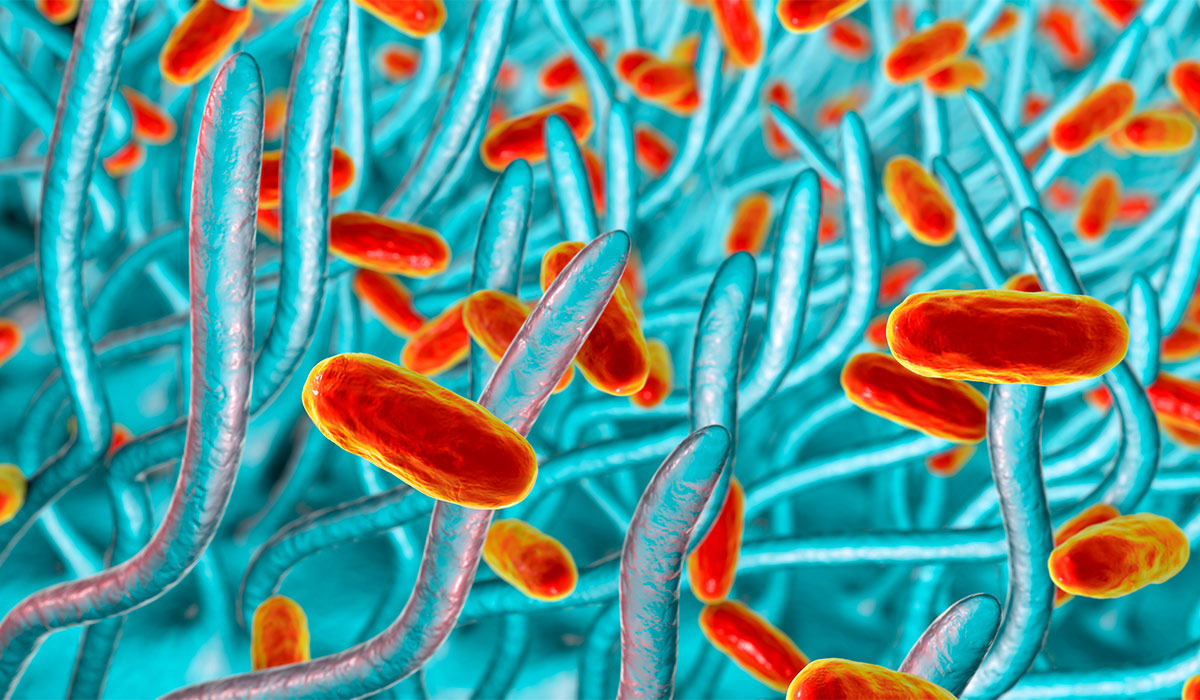
Whooping cough is an acute infectious disease of the respiratory system caused by bacteria. What are its causes and symptoms?… read more »
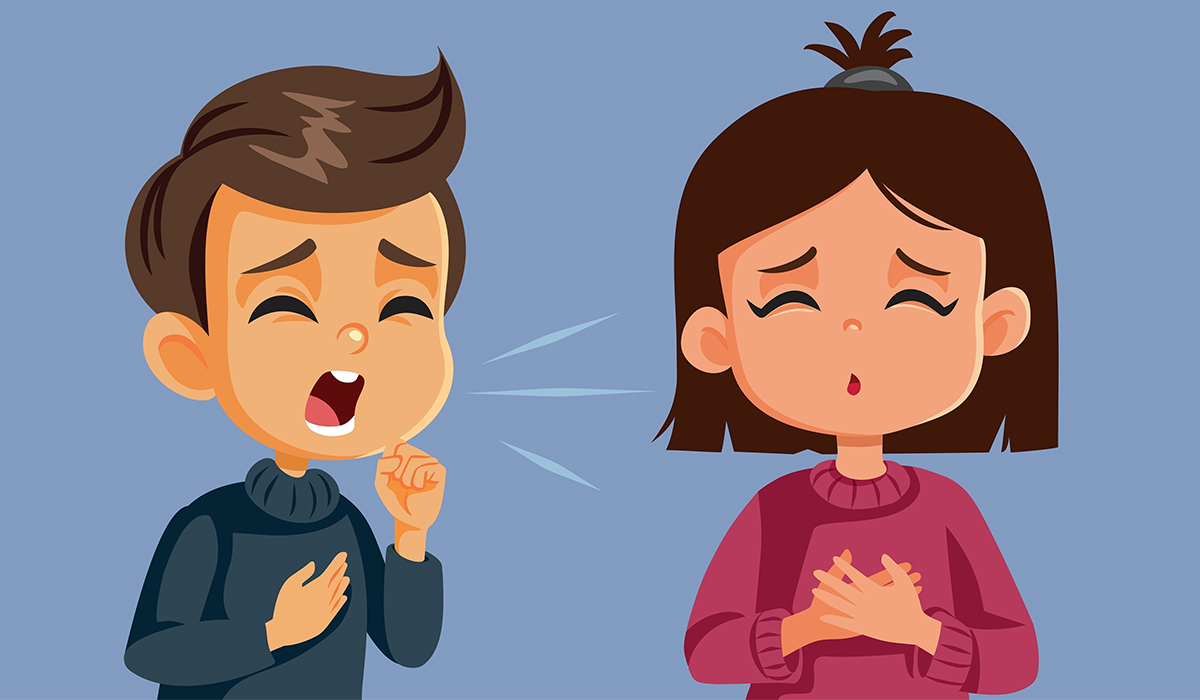
Cough is a natural, necessary reflex that protects the body from factors such as germs and pollens. When it is… read more »

A dry socket may occur after tooth extraction, a procedure in which a tooth is removed from the socket in… read more »

Hay fever is one of the symptoms of allergies. It may appear immediately after contact with the allergen or after… read more »
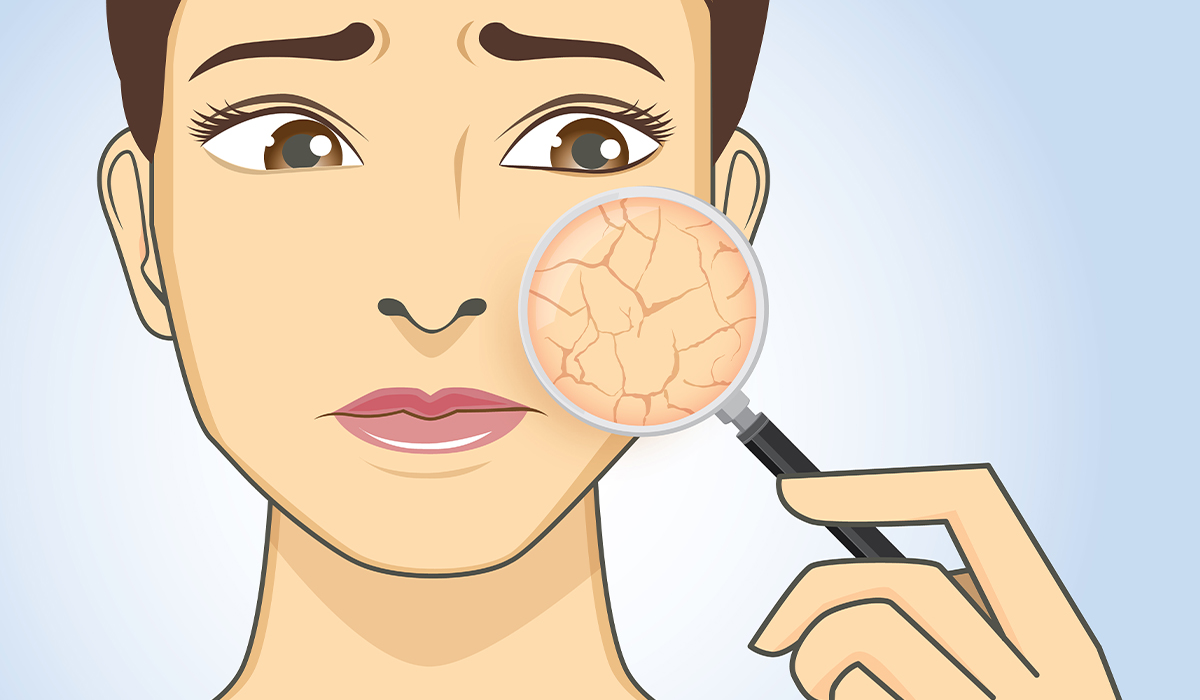
Dry skin is a bothersome problem that can affect everybody. Find out what dries out your skin. Learn about moisturising… read more »

A common cold is a set of symptoms associated with inflammation of the mucous membranes of the nose, throat and… read more »

Sinusitis is a common disease. Learn how to recognize sinus infection – symptoms and causes. Check out what are the… read more »
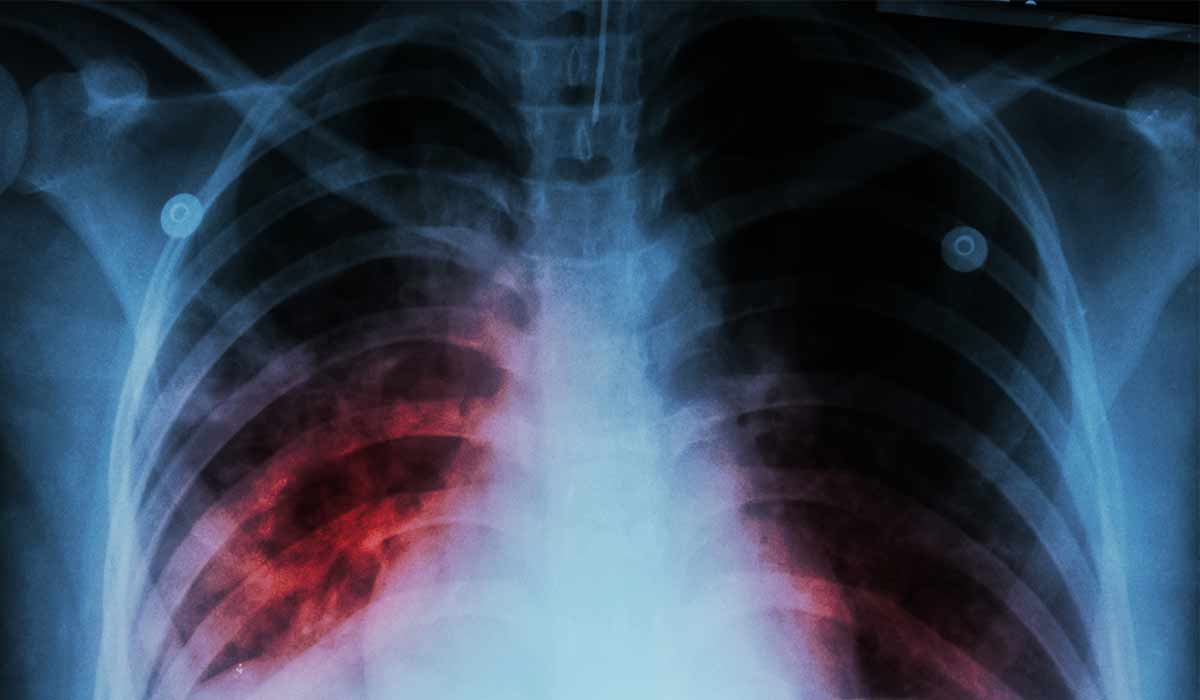
Tuberculosis is an infectious disease caused by mycobacteria. There are many types of tuberculosis with varying symptoms. Learn it all… read more »
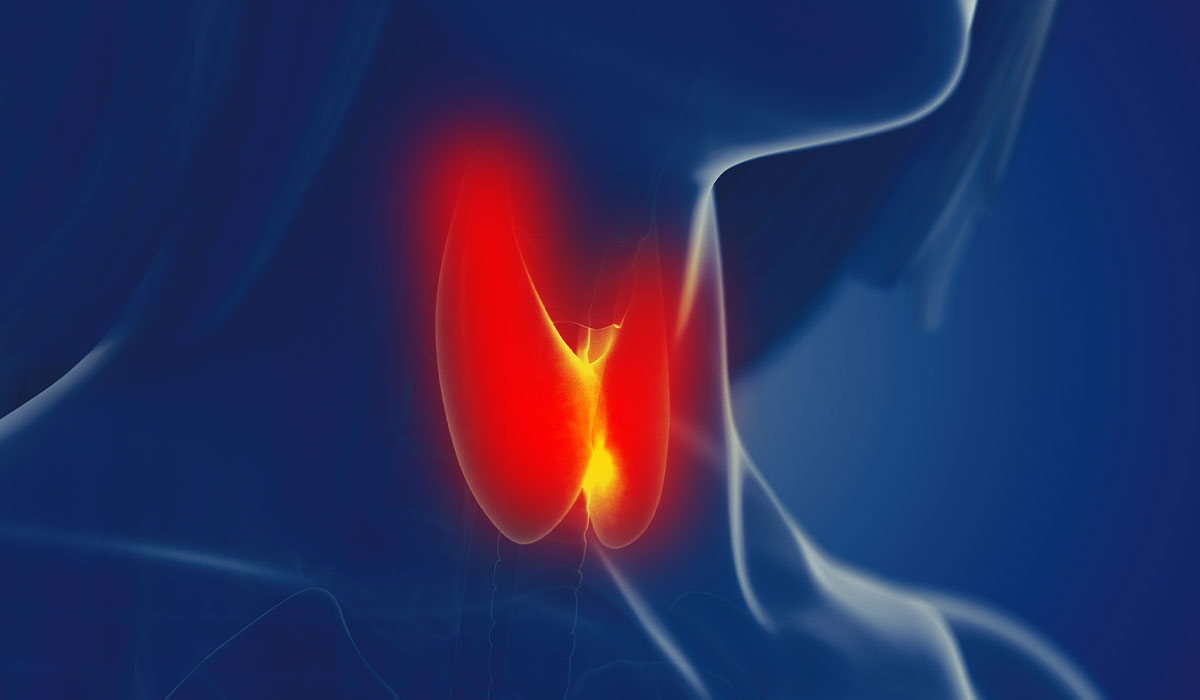
Goiter is an enlargement of this gland. It is not a disease itself, but rather a symptom of a medical… read more »